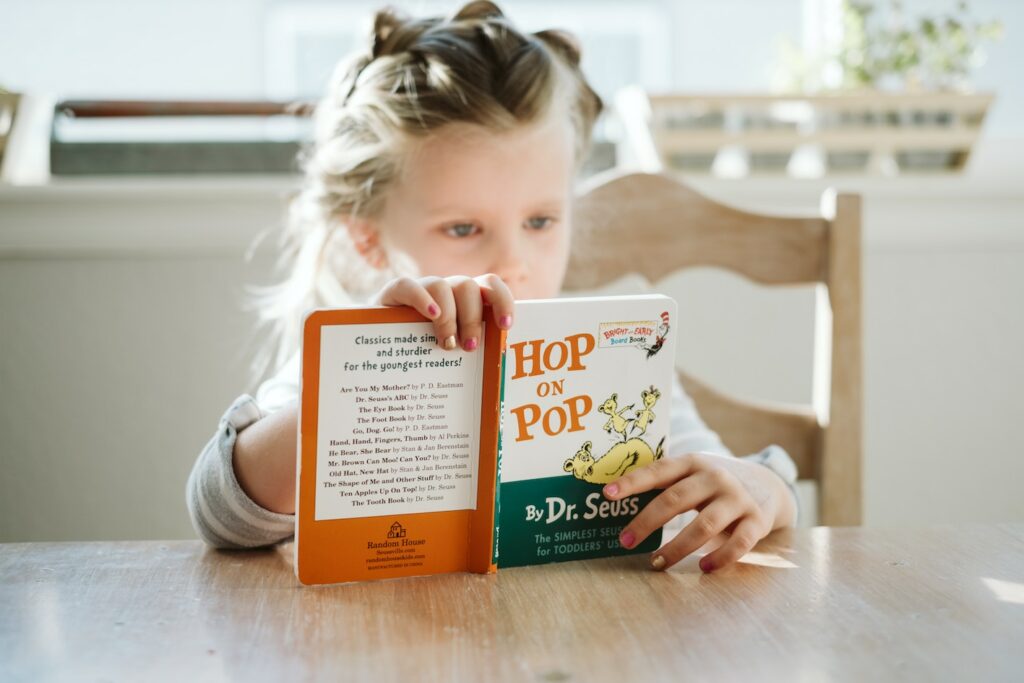When it comes to rhyming, many people have either learnt a rhyme, sang a rhyme, constructed a rhyme or heard a rhyme. For instance, the classic nursery rhymes (that we had been introduced to when we were very young, either at school or at home) such as “Incy Wincy Spider” or even “Twinkle, Twinkle Little Star” are excellent examples of rhyming. Yet are we still providing children with the necessary time to learn and play with rhymes?”
Why are we taught rhymes?
To dive right into it, research has shown that rhyming is instrumental in learning to read. Let’s take a step back to understand this. If one examines the fundamentals of communication for babies, toddlers, and young children, the areas of importance listening and speaking – reading and writing come later. However, phonological awareness, which is a precursor to the above, is necessary for the learning and manipulation of the alphabet system, as it allows for the child to play with the sounds within spoken language. This allowance plays a part in the ability to decode and blend sounds which leads to the ultimate goal – the reading of words. It allows for the prediction of how a child will progress with reading and spelling in later school years. The most important thing to remember is that phonological awareness does not just start at a school level, but many years before it – which is where the importance of rhyming comes in.
How does rhyming help a child to develop literacy skills?
Rhyming helps younger children learn about spoken language as the hearing of rhymes with repetition and rhythm aids in the development of early or pre-literacy skills. Rhyming teaches children to listen for patterns within sounds, which in turn leads to patterns in words, and when these are heard over and over, children start understanding how sound patterns can be grouped together – leading to a better phonological understanding of sounds. This then leads to a better understanding of decoding and blending, which are the skills necessary for reading and spelling.
Rhyme in the early stage of phonological awareness
Between the ages of 4-5 years, the role of rhyming in phonological awareness is really important. It is during this time that children become more responsive to rhymes, signalling an awareness of rhyming word patterns and the changes that can be heard when changed, ultimately pointing out which word doesn’t belong. What is important here is the recognition and engagement with rhyming that is taking place – it does not matter if the rhyming words are real or nonsense words, but rather the fact that the process is happening. At the same time other phonological awareness skills are being mastered such as, the counting out and clapping of syllables within words, the beginning stages of blending of syllables, and recognising the same beginning sounds in words (alliteration). All these important phonological awareness skills in this early stage correspond to a specific stage of learning to read (Kilpatrick, 2015).
What other skill can be taught through rhyming?
As mentioned above, rhyming helps children to become aware of sound patterns in language, but there is much more to that. Rhymes (and especially nursery rhymes in the early stages of development) help children to pick up on a pace and rhythm within language, which aids in the ability to later make use of expression when reading text, and further to this, assists with the skill of later reading prediction in text – through the anticipation and excitement of what rhyming word will come next in the rhyme! Finally, the simple joy found in making up a rhyme never ceases to grow the imagination. For more information on how we can support you as an educator, health professional, parent or care-giver, visit www.bellavista.org.za
“So to end this rhyme story and we hope it plants the seed
To your young children, you must teach rhymes and often read!
With all of these skills to help their literacy development grow
The above is a tip which we now hope you will show!”
References:
Kilpatrick D. A. (2015). Essentials of assessing, preventing and overcoming reading difficulties. Wiley.




